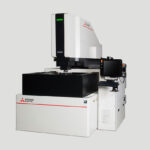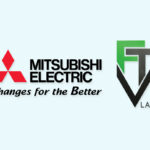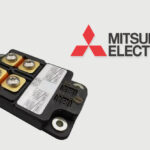ASIA ELECTRONICS INDUSTRYYOUR WINDOW TO SMART MANUFACTURING
Screwless Emerges as New Adhesive Method in Industrial Field
Products assembled using only adhesives instead of screws are increasing for smartphones, tablets, and wearable devices. In the industrial field, adhesion methods that replace screws are becoming more popular for parts used in power distribution and control equipment. This shift to “screwless” has caused new technological progress in surface modification for adhesion methods.
Until now, smartphones integrate many screws to secure parts. For making the smartphone body thinner, the screws need to be small and have ultralow profile. This requires the use of a special screwdriver. Hence, it tends to increase manufacturing costs. By using adhesives instead of screws, it can be lighter and more compact, reducing manufacturing costs.
When adhesives are used, surface treatment (surface modification) is required for increasing the strength of adhesiveness and coating. This is achieved by irradiation of short-wavelength ultraviolet light or plasma to create a contact layer with strong intermolecular forces.
FUJI Corporation is working to cultivate demand for its atmospheric pressure plasma unit “Tough Plasma,” which improves adhesiveness and coating. Plasma is the fourth state of matter after solid, liquid, and gas. It consists of positive ions, negative ions, and electrically neutral radicals. Specifically, this plasma unit uses the properties of radicals in plasma to modify the surface of metals and other materials to improve adhesiveness.
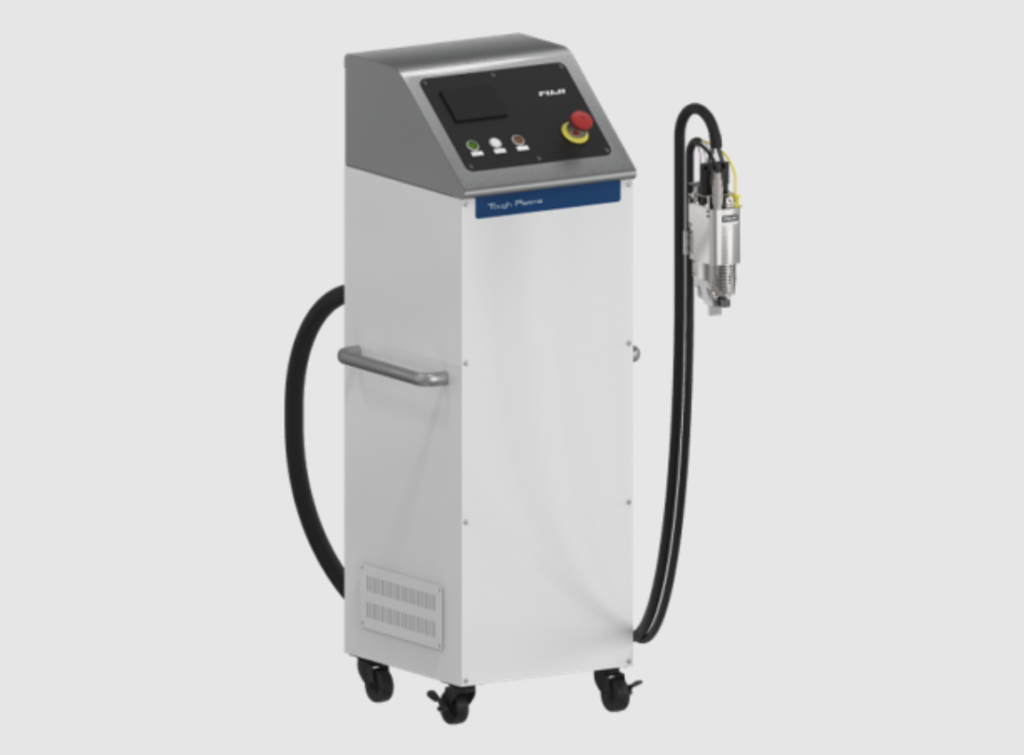
The conventional flame processing, in which a mixture of combustion gas and air is burned and oxygen in the air is turned into plasma, can cause damage due to heat. However, the atmospheric pressure plasma unit developed by the company operates at temperatures lower than 200 degrees during plasma irradiation and puts less stress on the resin. It removes organic contaminants from materials, such as metals, glass, and heat-sensitive rubbers in addition to resins without causing any deterioration of the material. Moreover, it achieves surface modification, high functionality, and improved adhesive strength.
Electric vehicles (EVs), which are replacing gasoline-powered vehicles, are required to be lighter in weight because they must travel longer distances using less energy. The use of polypropylene resin and carbon fiber reinforced plastic (CFRP), which is a composite material made of resin reinforced with carbon fibers, is increasing in place of metals. The demand for the atmospheric pressure plasma unit is expected for the adhesion of such materials.
Contributes to Production Efficiency
Major factory automation (FA) companies use the spring clamp method (spring terminal method) to increase efficiency in making power distribution and control equipment. They are trying to make the method popular. In this method, wires are clamped and connected using spring-like contacts instead of screws.
In power distribution and control equipment, the connection method involves a wire bent into a “U shape” and then wrapped around a screw and then tightened. However, the new connection method combines crimp terminals and screw tightening, and is now the mainstream. Because screws tend to become loose due to vibration, regular checking and retightening are essential, and such maintenance work is a heavy burden on the industry.
Specifically, the spring clamp method uses spring-like contacts instead of screws to clamp wires and has various advantages. In fact, it is free from the problem of loosening of screws caused by vibration or long-term use (reliability). The wiring work can be completed by simple insertion of wires (workability). Furthermore, the spring clamp method does not require periodic retightening (maintainability).
Mitsubishi Electric Corporation is expanding its lineup of FA/wiring equipment “EZ Connection” consisting of spring clamp terminals. The same specifications are being expanded into various product lineups, including electromagnetic contactors, electromagnetic relays, no-fuse circuit breakers, earth leakage circuit breakers, and circuit protectors.
Fuji Electric FA Components & Systems Co., Ltd., a subsidiary of Fuji Electric Corporation, is expanding its product lineup of spring terminal devices with the brand name “F-QuiQ” series. The spring terminal equipment of the company uses a uniquely designed leaf spring to achieve the same strong wire holding power as conventional screw terminals. Spring terminals are also used for electromagnetic contactors, electromagnetic switches, circuit breakers for wiring, etc. Command switches (push button switches) compatible with spring terminals are also available.
TAKIGEN MFG Co., Ltd. provides products that allow power distribution boards and control panels to be assembled without welding or screws. They can easily be assembled without using any screws or nuts, i.e., with no welding and no tools. They also contribute to labor savings and help resolve issues such as shortage of welders and production losses due to quality variations.
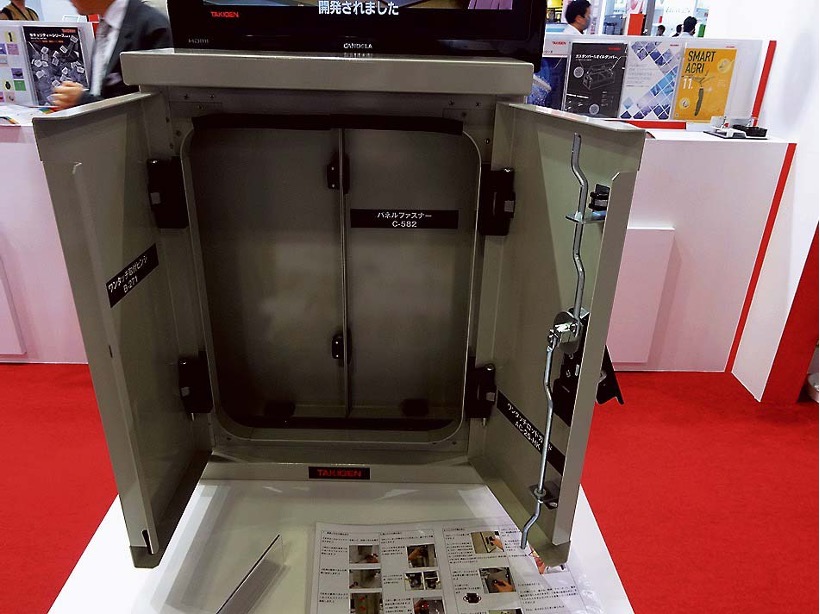
An increasing number of products such as smartphones, tablets, and wearable devices are assembled using adhesives without using any screws. In the industrial field, methods with no screws are becoming more widespread for parts such as power distribution and control equipment. The shift to “screwless” has produced new technological advances such as surface modification in adhesion methods.

